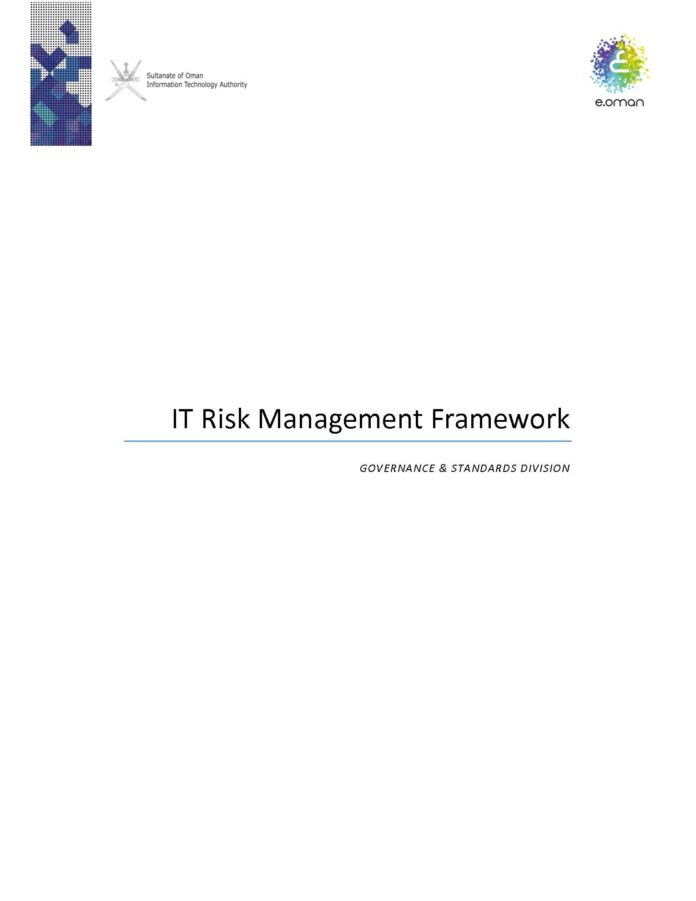Purpose of IT Risk Management Framework Document
The purpose of this framework document is to provide guidance for conducting risk assessments of government organizations. Risk assessments are part of an overall risk management process—providing senior leaders/executives with the information needed to determine appropriate courses of action in response to identified risks. In particular, this document provides guidance for carrying out each of the steps in the risk assessment process (i.e., preparing for the assessment, conducting the assessment, communicating the results of the assessment, and maintaining the assessment) and how risk assessments and other organizational risk management processes complement and inform each other.
Introduction to IT Risk Management Framework
Information technology is widely recognized as the engine that enables the government to provide better services to its citizens and facilitates greater productivity as a nation. Organizations in the public sector depend on technologyâ€intensive information systems to successfully carry out their missions and business functions.
Information systems are subject to serious threats that can have adverse effects on organizational operations (missions, functions, image, or reputation), organizational assets, individuals, other organizations, and the Nation by exploiting both known and unknown vulnerabilities to compromise the confidentiality, integrity, or availability of the information being processed, stored, or transmitted by those systems.
Threats to information and information systems can include purposeful attacks, environmental disruptions, and human/machine errors and result in great harm to the national and economic security interests of the Sultanate of Oman. Therefore, it is imperative that leaders and managers at all levels understand their responsibilities and are held accountable for managing information security risk—that is, the risk associated with the operation and use of information systems that support the missions and business functions of their organizations.
Organizational risk can include many types of risk (e.g., program management risk, investment risk, budgetary risk, legal liability risk, safety risk, inventory risk, supply chain risk, and security risk). Security risk related to the operation and use of information systems is just one of many components of organizational risk that senior leaders/executives address as part of their ongoing risk management responsibilities.
Effective risk management requires that organizations operate in highly complex, interconnected environments using stateâ€ofâ€theâ€art and legacy information systems—systems that organizations depend on to accomplish their missions and to conduct important businessâ€related functions.
Leaders must recognize that explicit, wellâ€informed riskâ€based decisions are necessary in order to balance the benefits gained from the operation and use of these information systems with the risk of the same systems being vehicles through which purposeful attacks, environmental disruptions, or human errors cause mission or business failure. Managing information security risk, like risk management in general, is not an exact science.
It brings together the best collective judgments of individuals and groups within organizations responsible for strategic planning, oversight, management, and dayâ€toâ€day operations—providing both the necessary and sufficient risk response measures to adequately protect the missions and business functions of those organizations.
The role of information security in managing risk from the operation and use of information systems is also critical to the success of organizations in achieving their strategic goals and objectives. Historically, senior leaders/executives have had a very narrow view of information security either as a technical matter or in a stovepipe that was independent of organizational risk and the traditional management and life cycle processes.
This extremely limited perspective often resulted in inadequate consideration of how information security risk, like other organizational risks, affects the likelihood of organizations successfully carrying out their missions and business functions.
This publication places information security into the broader organizational context of achieving mission/business success. The objective is to:
Ensure that senior leaders/executives recognize the importance of managing information security risk and establish appropriate governance structures for managing such risk;
- Ensure that the organization’s risk management process is being effectively conducted across the three tiers of the organization, mission/business processes, and information systems;
- Foster an organizational climate where information security risk is considered within the context of the design of mission/business processes, the definition of overarching enterprise architecture, and system development life cycle processes; and
- Help individuals with responsibilities for information system implementation or operation better understand how information security risk associated with their systems translates into an organizationâ€wide risk that may ultimately affect the mission/business success.


